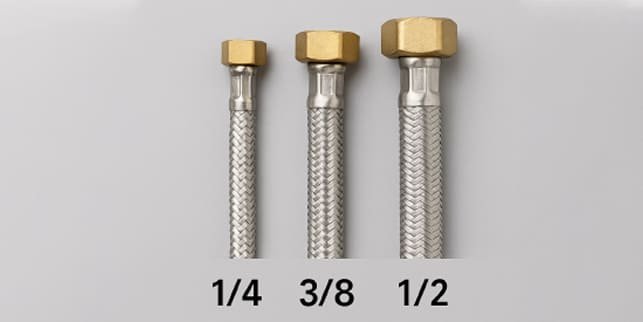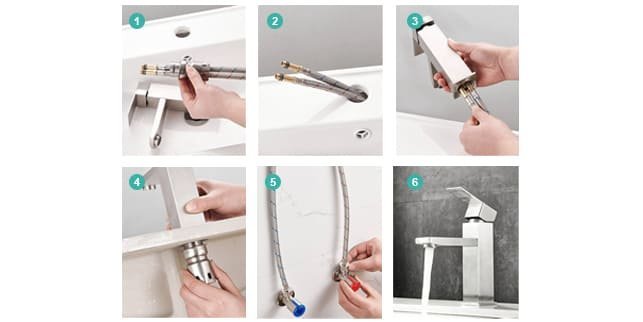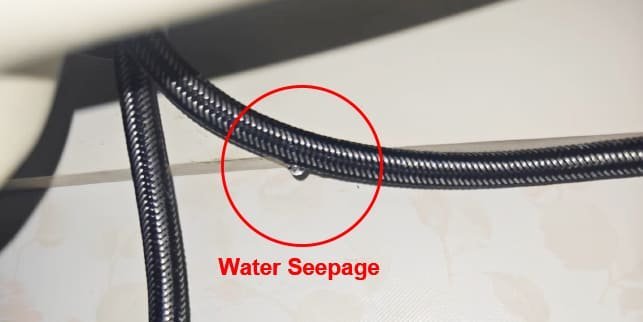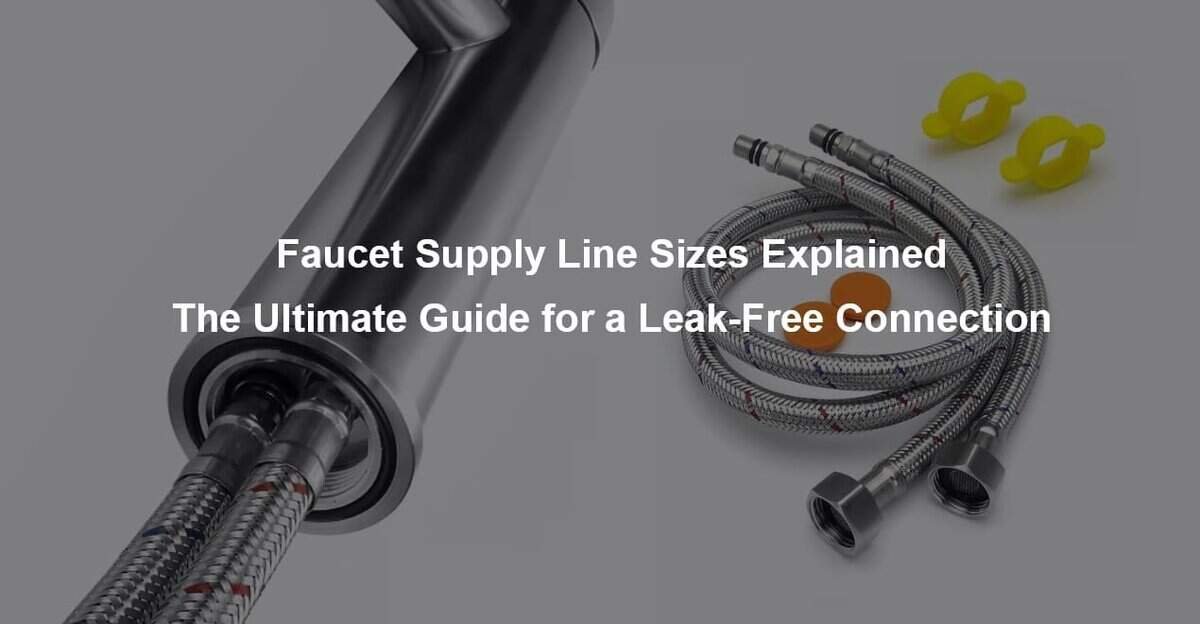Faucet Supply Line Sizes Explained: The Ultimate Guide for a Leak-Free Connection
When installing or replacing a faucet, one crucial yet often overlooked factor is the faucet supply line size. A properly sized supply line ensures optimal water flow, prevents leaks, and guarantees the longevity of your plumbing system. Whether you’re upgrading a kitchen faucet, replacing a bathroom sink faucet, or installing a new system altogether, understanding supply line sizes, materials, and connection types is essential.
In this guide, we’ll cover everything you need to know about faucet supply line sizes, including:
- Common standard sizes used for kitchen and bathroom faucets
- Different materials and their pros and cons
- How to measure and select the right size
- Common installation mistakes and how to avoid them
By the end, you’ll be confident in choosing the best faucet supply line for your home or business.
What is a Faucet Supply Line?
A faucet supply line is a flexible or rigid tube that connects your water supply valve to the faucet inlet. It delivers hot and cold water from your home’s plumbing system to your sink, ensuring smooth water flow.
Supply lines come in different sizes, lengths, and materials, and choosing the right one is key to preventing issues such as:
- Low water pressure
- Leaks and drips
- Corrosion or burst pipes
Common Faucet Supply Line Sizes
1. Standard Supply Line Sizes
The most commonly used faucet supply line sizes in the U.S. and many other countries include:
Supply Line Size | Thread Type | Common Use |
3/8-inch | Compression | Standard kitchen and bathroom faucets |
1/2-inch | NPT (National Pipe Thread) | Older faucets and shower systems |
1/4-inch | Compression | Some small bathroom faucets or filtration systems |
Most modern faucets use 3/8-inch compression fittings, but older homes may have 1/2-inch connections.

2. Faucet Connection Sizes
On the faucet end, most supply lines connect to:
- 1/2-inch Male Pipe Thread (MPT)
- 3/8-inch Compression Fitting
Make sure to check your faucet’s manufacturer specifications before purchasing supply lines to ensure compatibility.
3. Water Shut-Off Valve Sizes
Your shut-off valve (the valve under your sink that controls water flow) typically has:
- 3/8-inch or 1/2-inch outlet size
- Compression or threaded connections
For newer homes, most shut-off valves are 3/8-inch compression, while older homes may use 1/2-inch threaded connections.

Types of Faucet Supply Line Materials
Faucet supply lines are made from various materials, each with advantages and disadvantages.
Material | Pros | Cons |
Braided Stainless Steel | Durable, corrosion-resistant, flexible, easy to install | Slightly more expensive |
PVC (Polyvinyl Chloride) | Affordable, lightweight | Less durable, can degrade over time |
brass | Long-lasting, corrosion-resistant | Harder to install, not flexible |
PEX (Cross-Linked Polyethylene) | Flexible, resistant to freezing | Not as widely available in all sizes |
For residential use, braided stainless steel is the most popular choice due to its flexibility, strength, and leak resistance.

How to Measure Your Faucet Supply Line Size
To ensure you get the right supply line, follow these simple steps:
- Check your faucet’s inlet size
- Look at the manufacturer’s specs
- Most modern faucets use 3/8-inch compression fittings
- Measure the shut-off valve outlet
- Usually 3/8-inch or 1/2-inch
- Match the supply line’s end fittings accordingly
- Determine the length needed
- Measure from the shut-off valve to the faucet inlet
- Standard supply lines come in 12, 16, 20, and 24 inches
- Choose the right material
- Braided stainless steel is recommended for most applications
- PEX is a good option for areas prone to freezing temperatures
Common Faucet Supply Line Installation Mistakes to Avoid
Even if you buy the correct size and material, improper installation can cause problems. Here are some common mistakes and how to avoid them:
- Using the wrong size – Double-check faucet and shut-off valve connection sizes.
- Overtightening connections – This can damage washers and lead to leaks. Hand-tighten, then give a slight turn with a wrench.
- Not using plumber’s tape – Teflon tape ensures a tight seal on threaded connections.
- Kinking the supply line – Avoid bending or twisting flexible lines, as this can restrict water flow.
- Reusing old supply lines – Always replace old supply lines when installing a new faucet.

FAQs: Choosing the Right Faucet Supply Line
No, you will need a reducer adapter to fit different sizes. It’s best to match the correct supply line size.
It’s recommended to replace supply lines every 5–10 years to prevent leaks.
No, always check the connection size and length before purchasing.
Yes! With the right tools, installing a new supply line is a simple DIY task.

Choosing the Right Faucet Supply Line Made Easy
Selecting the correct faucet supply line size is essential for a leak-free and efficient plumbing system. By considering connection sizes, materials, and proper installation, you can ensure long-lasting performance for your kitchen or bathroom faucet.
For the best results:
✅ Measure your faucet and shut-off valve connections
✅ Choose durable materials like braided stainless steel
✅ Follow proper installation techniques
Still unsure about which supply line to choose? Check out our detailed guide on faucet components: Top 5 Brands for High-Quality Faucet Cartridges in 2025





